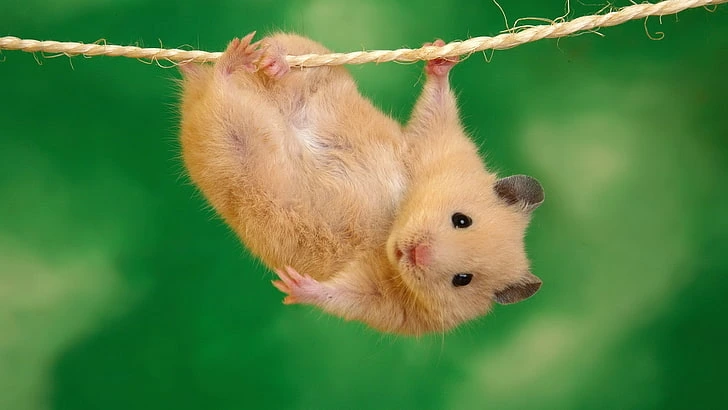Overview 47 Facts About Teddy Bear Hamsters
Greetings, fellow admirers of small companions! 🐹 If you’ve ever found yourself enchanted by the captivating allure of teddy bear hamsters, prepare for an enlightening journey.
In this exploration, we’ll unveil 47 Facts About Teddy Bear Hamsters and the world of these endearing creatures.
From their distinctive behaviors to insightful care recommendations, this article promises to enrich your understanding of teddy bear hamsters.
1. Origins and Name: Where Do Teddy Bear Hamsters Come From?
Teddy bear hamsters, also known as Syrian hamsters, are native to the arid regions of Syria. Their name stems from their irresistibly cute and cuddly appearance, reminiscent of teddy bears.
2. Solitary Creatures: Do Teddy Bear Hamsters Like Their Space?
Unlike some hamster breeds, teddy bear hamsters prefer solitude. They’re not big fans of roommates and tend to avoid territorial disputes by living alone.
3. Nocturnal Wonders: Who’s Awake When the Night Falls?
Ever wondered about hamster nightlife? Teddy bear hamsters are mostly active during the night, a behavior that helps them avoid daytime predators.
4. Lifespan: How Long Do Teddy Bear Hamsters Live?
On average, teddy bear hamsters have a lifespan of 2 to 3 years. With proper care, their life expectancy can be extended.
5. Size and Appearance: How Big Are Teddy Bear Hamsters?
Teddy bear hamsters grow to about 5 to 7 inches in length. They have a robust body covered in soft fur, available in various colors and patterns.
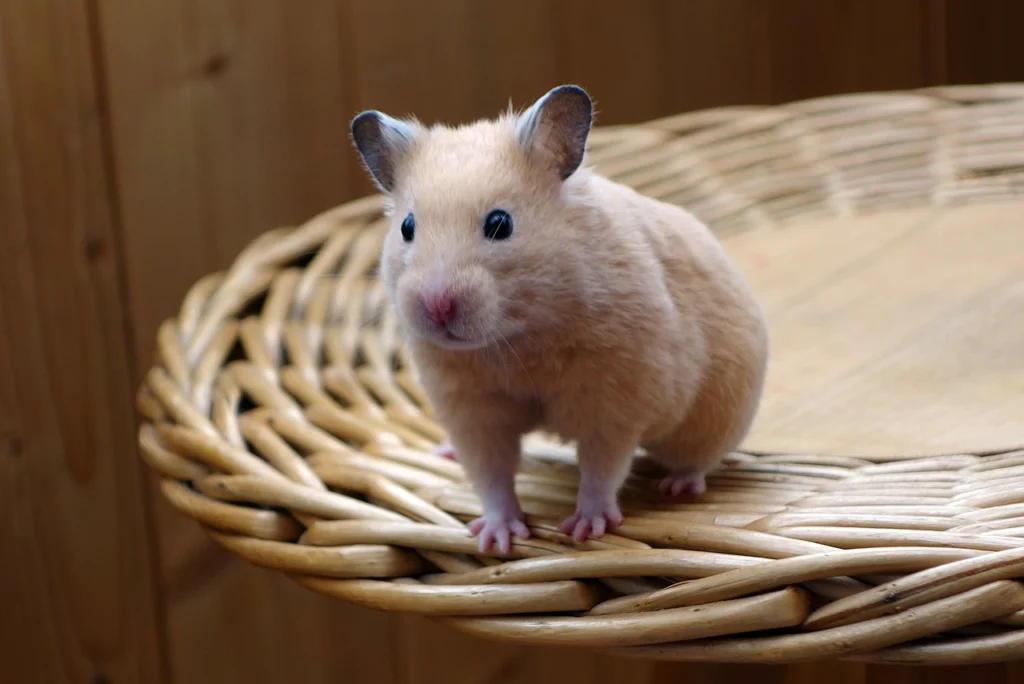
6. Cheek Pouches: Where Do They Store Their Snacks?
One fascinating feature of teddy bear hamsters is their cheek pouches, which they use to store and transport food back to their nests.
7. Excellent Sense of Smell: Are Teddy Bear Hamsters Good Detectives?
Teddy bear hamsters possess a keen sense of smell, which they use to find food and sense potential dangers in their environment.
8. Gentle Demeanor: Are Teddy Bear Hamsters Friendly?
Known for their friendly disposition, teddy bear hamsters can become quite docile with proper handling. They rarely bite and are ideal for beginners.
9. No Tails: Why Do Teddy Bear Hamsters Have Short Tails?
Unlike some hamster species, teddy bear hamsters have very short tails, contributing to their teddy bear-like appearance.
10. Hamster Hygiene: How Do Teddy Bear Hamsters Stay Clean?
Teddy bear hamsters are meticulous about their cleanliness. They groom themselves regularly to maintain clean and neat fur.

11. Burrowing Behavior: Do Teddy Bear Hamsters Like to Dig?
In their natural habitat, teddy bear hamsters are skilled burrowers. Providing them with opportunities for digging and tunneling is essential for their well-being.
12. Dietary Needs: What’s on the Menu for Teddy Bear Hamsters?
Teddy bear hamsters primarily consume hamster pellets, fresh vegetables, fruits, and occasional treats. A balanced diet is crucial for their health.
13. Night Owls: Who’s Awake When You’re Asleep?
Due to their nocturnal nature, teddy bear hamsters might keep you up at night with their energetic activity, especially on their exercise wheel.
14. Sensitive to High Temperatures:How Do Teddy Bear Hamsters Beat the Heat?
Teddy bear hamsters are sensitive to high temperatures and can become stressed in hot environments. Keeping their habitat cool and shaded is important.
15. Playful Personalities: Are Teddy Bear Hamsters Playful?
Teddy bear hamsters have playful personalities and enjoy exploring their surroundings. Providing toys and tunnels can keep them engaged.
16. Escapologists: Can Teddy Bear Hamsters Escape Easily?
Teddy bear hamsters are known for their escape skills, so ensuring their cage is secure and escape-proof is crucial.
17. Chubby Cheeks: Why Do Teddy Bear Hamsters Have Chubby Cheeks?
When teddy bear hamsters store food in their cheek pouches, their cheeks can appear chubby, adding to their adorable appearance.
18. Short Gestation Period: How Long is the Pregnancy for Teddy Bear Hamsters?
The gestation period for teddy bear hamsters is remarkably short, lasting only about 16 to 18 days. They can have sizable litters, so being prepared is essential.
19. Adaptable: Can Teddy Bear Hamsters Thrive Anywhere?
Teddy bear hamsters are adaptable and can thrive in various living environments, whether it’s an apartment or a house.
20. Love for Nesting: Why Do Teddy Bear Hamsters Love Nesting?
Teddy bear hamsters have a natural instinct for nesting. Providing materials like paper and hay helps satisfy this behavior.

21. Communication Through Scent: How Do Teddy Bear Hamsters Talk?
Teddy bear hamsters communicate through scent markings, using scent glands located on their hips and belly.
22. Sensitive Hearing: Do Teddy Bear Hamsters Have Sharp Hearing?
Thanks to their large ears, teddy bear hamsters have excellent hearing, allowing them to detect subtle sounds in their environment.
23. Unique Personalities: Are Teddy Bear Hamsters Unique Individuals?
Just like people, each teddy bear hamster has its own distinct personality, ranging from adventurous to reserved.
24. Proper Handling: How Do You Hold a Teddy Bear Hamster?
When picking up a teddy bear hamster, it’s important to provide gentle support with both hands to minimize stress and prevent escape.
25. Health Indicators: How Can You Tell If a Hamster is Healthy?
An active and alert hamster is generally a healthy one. Changes in behavior, eating habits, or appearance could indicate health issues.
26. Dental Care: Why Do Teddy Bear Hamsters Need Chew Toys?
Teddy bear hamsters’ teeth continuously grow, so they require chew toys to maintain healthy dental hygiene.
27. Vision Abilities: How Well Can Teddy Bear Hamsters See?
Despite not having the sharpest vision in the animal kingdom, teddy bear hamsters can still navigate their surroundings quite well. Their keen sense of smell and hearing help them compensate for their limited eyesight.
28. Variety of Coat Colors: What’s in a Teddy Bear Hamster’s Color Palette?
Teddy bear hamsters come in a diverse range of coat colors, each with its own unique charm. From golden and cinnamon to black and white, these little furballs offer a colorful spectrum of cuteness.
29. Habitat Enrichment: How Can You Make a Hamster’s Home Exciting?
Creating an enriched habitat for your teddy bear hamster goes beyond just a cozy cage. Adding tunnels, hideouts, and platforms simulates their natural environment, keeping them engaged and mentally stimulated.
30. Handling Babies: When Can You Interact with Baby Hamsters?
If your teddy bear hamster becomes a parent, exercise patience before handling the adorable newborns. Allowing the mother to bond with her babies during the first couple of weeks is essential for their well-being.
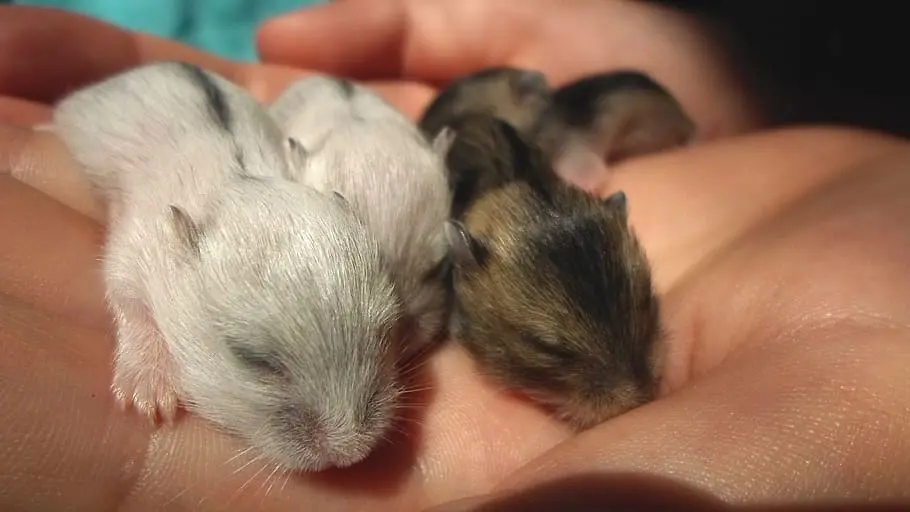
31. No Hibernation: Do Teddy Bear Hamsters Hibernate Like Some Animals?
While some animals hibernate to survive the cold, teddy bear hamsters don’t. Keeping their environment at a steady temperature ensures they stay active and healthy year-round.
32. Social Animals: Can Teddy Bear Hamsters Bond with Humans?
Even though they prefer solitary living, teddy bear hamsters can still form a bond with their human companions. Interaction and gentle handling play a role in nurturing this connection.
33. Pet-Friendly: Are Teddy Bear Hamsters Good Family Pets?
Teddy bear hamsters make wonderful additions to families, especially those with children. Their gentle nature and straightforward care requirements make them a perfect choice for young pet lovers.
34. Soft Sleeping Habits: How Do Teddy Bear Hamsters Catch Their Zzz’s?
Teddy bear hamsters have a knack for finding the coziest spots to sleep. You might catch them napping in all sorts of adorable positions – it’s a hamster’s version of a sweet slumber.
35. Taming Takes Time: How Do You Win Over a Shy Hamster?
If your new teddy bear hamster seems a bit shy at first, don’t worry. With patience and consistent care, they’ll warm up to their surroundings and build trust with you over time.
36. Exploration Instincts: Why Do Teddy Bear Hamsters Love to Explore?
Exploration is in their DNA! Teddy bear hamsters have a natural instinct to explore new territories. Setting up a safe area for them to discover outside of their cage can be a rewarding adventure.
37. No Cold Water Baths: Why Shouldn’t You Bathe a Hamster with Water?
Bathing your teddy bear hamster with water might not be the best idea. Hamsters groom themselves using their tongues and paws, and a water bath can lead to stress and discomfort.
38. Vocalizations: Can Teddy Bear Hamsters Speak Up?
While they’re not exactly chatterboxes, teddy bear hamsters can communicate through squeaks and chirps. These little sounds express their feelings, whether they’re excited or agitated.
39. Sense of Adventure: What’s It Like Exploring with Teddy Bear Hamsters?
Imagine joining your hamster on a tiny adventure! Teddy bear hamsters have a curious spirit, always eager to investigate new objects in their environment. It’s like being their exploration buddy!
40. Escaping Enclosures: Can Teddy Bear Hamsters Be Escape Artists?
Teddy bear hamsters have a talent for escaping their enclosures, thanks to their climbing abilities. Keeping their cage secure and regularly checking for potential escape routes is a must.
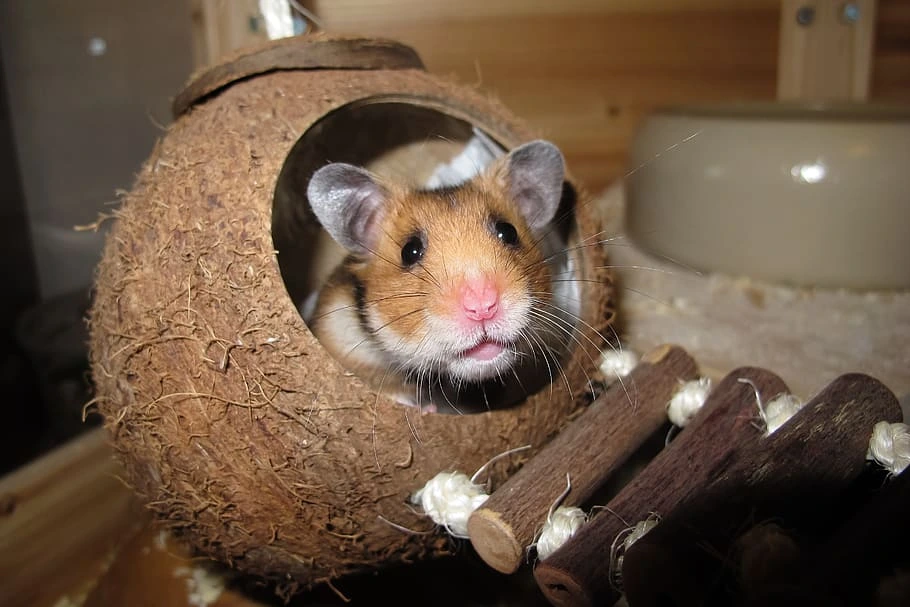
41. Enigmatic Whiskers: How Do Whiskers Help Teddy Bear Hamsters?
Whiskers aren’t just stylish accessories for hamsters – they’re tools for navigation. Teddy bear hamsters use their whiskers to sense objects and navigate through their surroundings.
42. Diverse Diet: What Does a Teddy Bear Hamster’s Menu Include?
In their natural habitat, teddy bear hamsters are omnivores, munching on both plants and insects. To mimic their diet, offer a mix of fresh veggies, fruits, and hamster pellets.
43. Stress-Free Environment: How Can You Keep Your Hamster Stress-Free?
A serene and peaceful environment is essential for your teddy bear hamster’s well-being. Minimize loud noises and disturbances to help them feel calm and at ease.
44. Maintaining Bond: How Can You Strengthen Your Relationship with Your Hamster?
Consistent, gentle handling and positive interactions are key to building a strong bond with your teddy bear hamster. The more trust you develop, the closer your connection will become.
45. Importance of Chew Toys: Why Are Chew Toys Essential for Hamsters?
Chew toys aren’t just for fun – they’re crucial for hamsters’ dental health. Chewing on these toys helps wear down their continuously growing teeth and prevents issues.
46. Exploration Wheels: Why Do Teddy Bear Hamsters Love Exercise Wheels?
Exercise wheels aren’t just toys – they’re mini gyms for teddy bear hamsters. These little furballs adore running on wheels, satisfying their natural urge to move and explore.
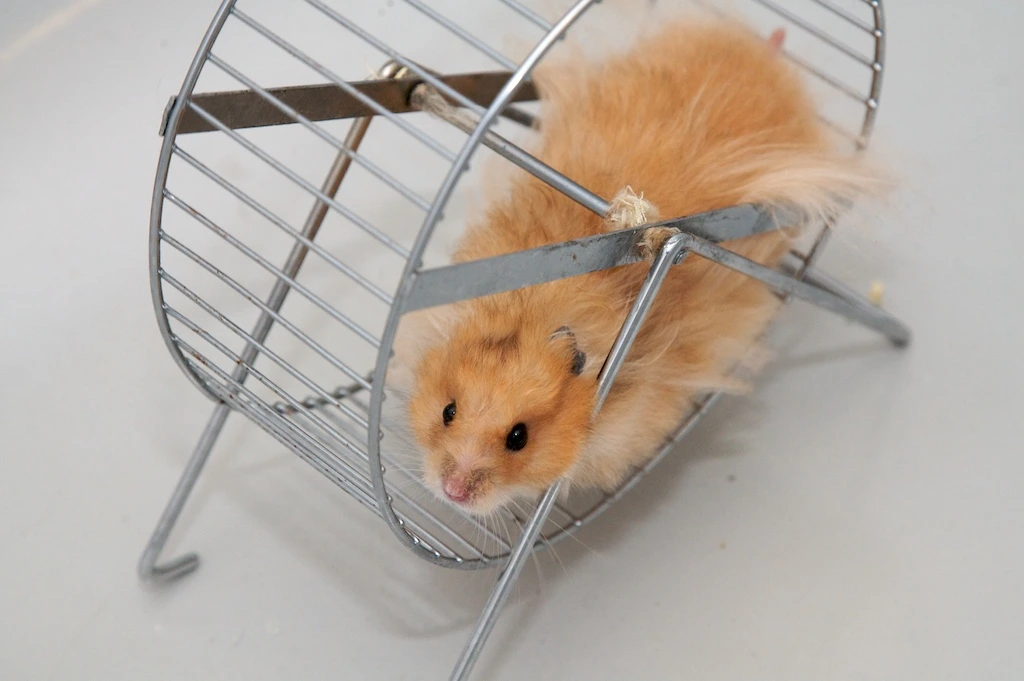
47. Lifelong Learning: What Will You Discover While Caring for Your Hamster?
Caring for a teddy bear hamster is an ongoing adventure filled with surprises. Each day brings new insights into their behaviors, preferences, and unique personalities. Get ready to be amazed!
Conclusion: Teddy Bear Hamsters – Your Charming Companions!
With their captivating nature and endearing qualities, teddy bear hamsters have a special place in the hearts of pet enthusiasts.
Their playful antics, charming appearance, and captivating behaviors make them wonderful companions for those who shower them with love and attention.
You can explore further information on RSPCA or ASPCA related to your pet.
Whether you’re new to hamster parenting or a seasoned aficionado, these tiny furballs are sure to fill your days with joy and happiness
FAQs
Q1: Can teddy bear hamsters live together?
No, teddy bear hamsters are solitary animals and prefer to live alone. Putting two or more hamsters together can lead to fights and stress, so it's best to provide each hamster with its own separate living space.
Q2: How do I set up a proper habitat for my teddy bear hamster?
Creating a comfortable and enriching habitat is essential. You'll need a spacious cage with bedding material, hiding spots, tunnels, and an exercise wheel. Make sure to include a water bottle, food bowl, and safe chew toys. Providing a balanced diet and fresh water is equally important.
Q3: Are teddy bear hamsters good pets for children?
Yes, teddy bear hamsters can be great pets for families with children. They are generally gentle and easy to handle. However, adult supervision is necessary to ensure the hamster's safety and well-being, and kids should be taught how to handle them properly to avoid accidental stress or injury to the hamster.
Q4: How often should I clean my hamster's cage?
Regular cleaning is important to maintain a healthy environment for your hamster. Clean out droppings and uneaten food daily, and perform a more thorough cleaning, including changing bedding, once a week. Keep an eye on the cage's cleanliness to ensure your hamster's well-being.
Q5: Can I train my teddy bear hamster to do tricks?
While teddy bear hamsters are intelligent, training them to do tricks might not be as straightforward as with some other pets. However, you can still work on building trust and teaching them to respond positively to your presence. Some hamsters can learn to come to you for treats or navigate simple obstacle courses, but remember that patience is key.
